Last year, during my research in the National Archives, I took many pictures of entries from a journal kept by the US Military Rail Road Construction Corps. One of these entries discusses the construction of a platform for the 13″ mortar. The weapon now known as the “Dictator.”
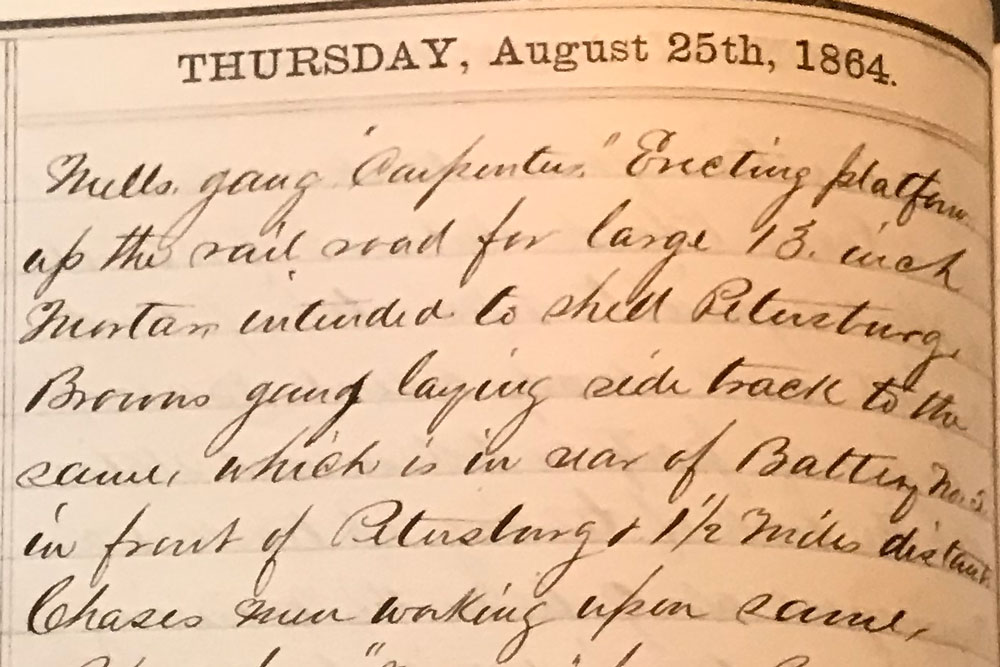
Thursday, August 25th, 1864
Mills gang “Carpenters” Erecting platform up the railroad for large 13 inch Mortar intended to shell Petersburg. Browns gang laying side track to the same, which is in rear of Battery No. 5, in front of Petersburg 1 1/2 miles distance.
Though this entry notes that the intention was to shell Petersburg, the reality was different. The 13″ mortar was positioned with an intention to suppress Confederate artillery that were posted in a rather advantageous position that flanked the right of the Union lines. The artillery in this position troubled the Union troops from the Second Battle of Petersburg through to the end of the siege, as the Union troops never were able to effectively suppress it. The nature of this flanking position can be clearly seen in this map of the positions of the Union 1st Division of the 9th Corps on April 1st, 1865. I added the red arrows showing the field of fire of the flanking Confederate batteries.
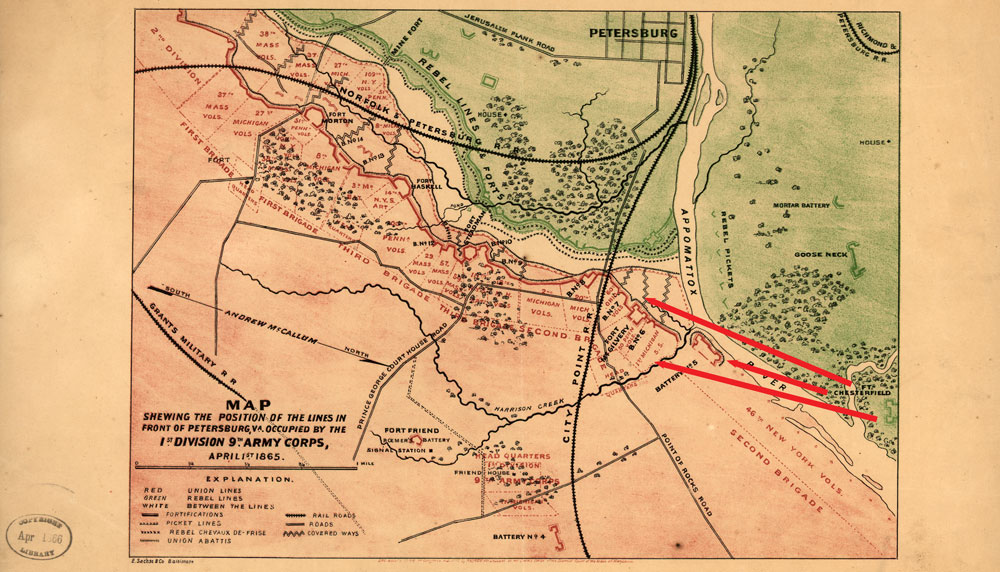
More can be found out about this problem and the 13″ mortar’s role in it, in the book, “History of the First Connecticut Artillery.” This unit operated the Union siege artillery during the siege of Petersburg, including the 13″ mortar. This regimental history is put together much like the Official Records, and is largely a compilation of surviving documents concerning the regiment. There are some additional notes added by the editors. This particular note spans pages 68 and 69 and describes how the 13″ mortar was used.
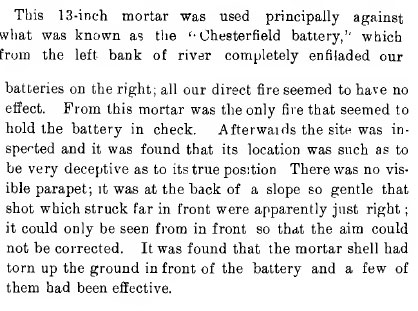
Though I haven’t done an exhaustive search through this book, the earliest reference to the 13″ mortar is on July 8th, 1864. In this memo, it is clear that the 13″ mortar is already in position on a truck carriage.
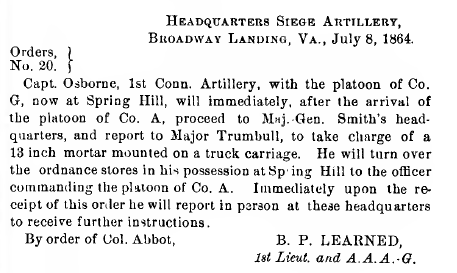
This additional message seems to indicate that the 13 inch mortar is just being brought up into line on the 8th, so Captain Osborne must have been the first commander of this mortar.
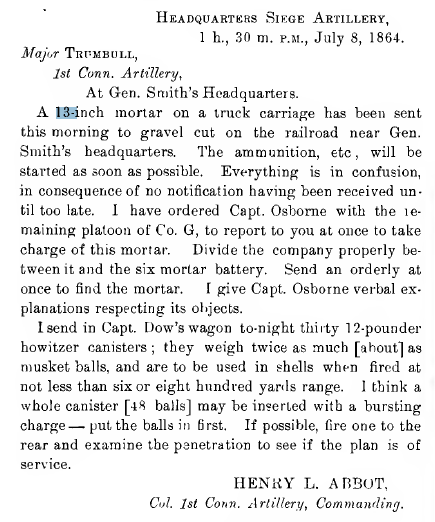
Right now, that’s all I have time for. I’ll elaborate on why there are orders to build a platform for the 13 inch mortar on the 25th of August, more than two weeks after it was first put into service, in a follow up post.
